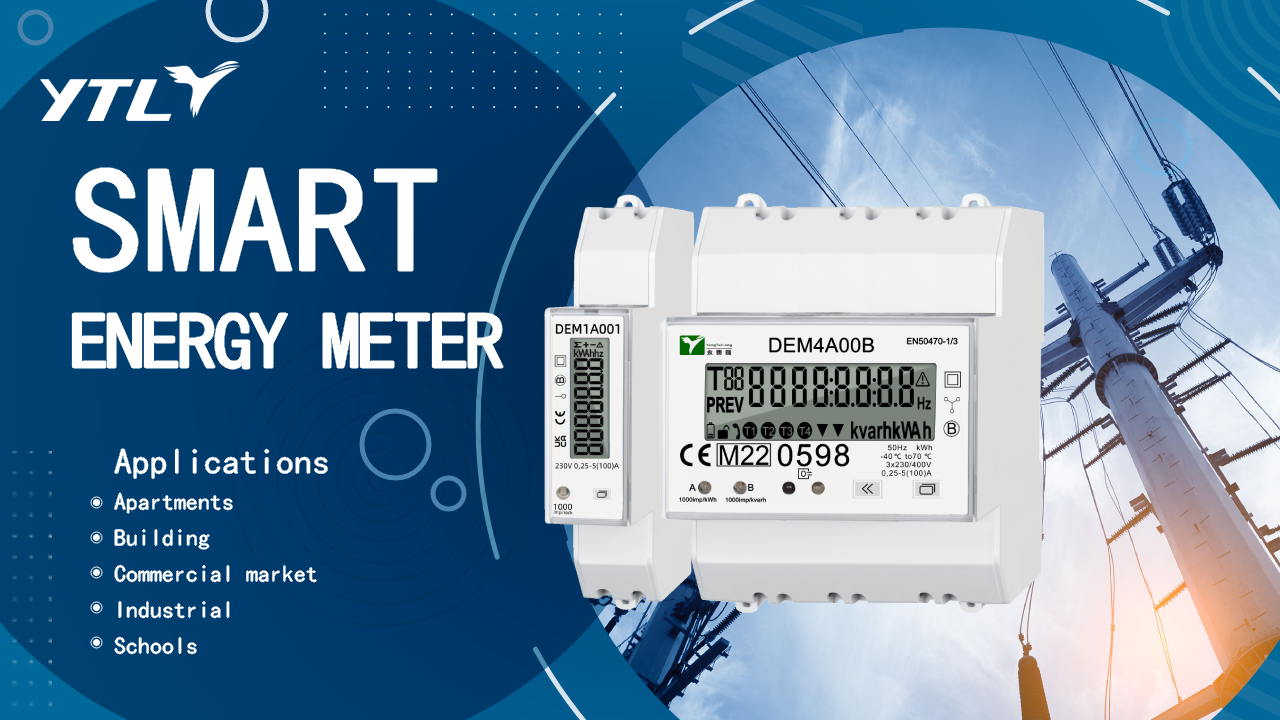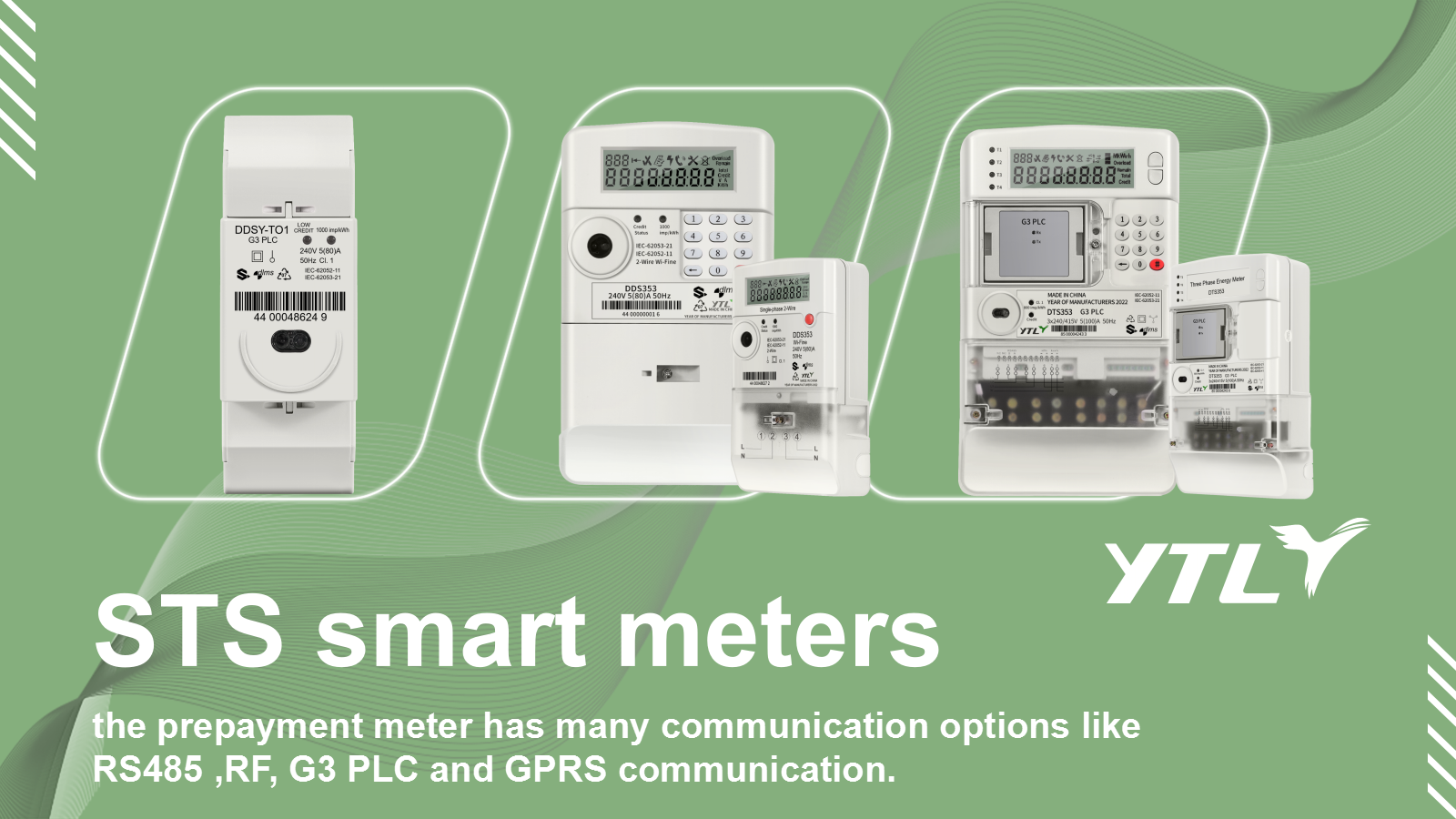The energy meter, also known as the electricity meter, fire meter or kilowatt-hour meter, is a device used to measure electrical energy. There are many categories of energy meters, which can be categorized in several dimensions. The following is a detailed introduction to the main categories of energy meters:
1. Classification by Measuring Current
DC energy meter: used to measure the electric energy in DC circuit.
AC energy meter: used to measure the electrical energy in the AC circuit. AC energy meter is widely used in the power system because it can adapt to the AC current and voltage in the power system.

2. Classification by the Phase Line
Single-phase energy meters: are used to measure electrical energy in single-phase AC circuits. Single-phase energy meters are usually used in homes and small commercial premises.
Three-phase three-wire power meter: used to measure the electrical energy in three-phase three-wire AC circuits. This type of meter is usually used in three-phase balanced power systems.
Three-phase four-wire energy meter: Used to measure electrical energy in three-phase four-wire AC circuits. Three-phase four-wire power system is more common, because it can provide greater flexibility and reliability.
3. Classification by the Working Principle
Electro-mechanical energy meters: also known as induction energy meters, which work on the principle of electromagnetic induction. When the current passes through the coil of the meter, a magnetic field will be generated, and this magnetic field will drive the mechanical structure inside the meter to rotate, so as to record the electric energy. Electro-mechanical energy meters have the advantages of simple structure, cheap price and easy maintenance, but the accuracy is relatively low.
Electronic power meter: also known as stationary power meter or solid-state power meter, it is based on electronic technology for measurement. Electronic power meter samples and converts current and voltage through internal electronic components, and then calculates and processes them through microprocessor to finally get the value of electric energy. Electronic energy meters have the advantages of high precision, multi-functionality and easy expansion, but the price is relatively high.

4. Classification by the Structure
Integral power meter: all components are integrated in a shell to form a whole. Integral energy meter is compact, small in size and easy to install.
Split-type power meter: composed of multiple independent components, these components can be installed in different locations. Split-type energy meters are usually used in large power systems or special installation occasions.
5. Classification by the Usage
Ordinary power meter: used to measure the power consumption of ordinary users or small commercial premises.
Specialized energy meters: used for special occasions or specific purposes of electric energy measurement. For example, quantitative energy meters are used to measure the power consumption within a specific period of time; multi-rate energy meters are used to bill according to different time periods or different power consumption; multi-functional energy meters integrate a variety of measurement and billing functions; standard energy meters are used to calibrate and test the accuracy of other energy meters; demand energy meters are used to measure the load demand of the power system; and pulse energy meters record the power consumption by sending out pulse signals. The pulse meter records power consumption by sending out pulse signals.
6. Classification by the Accuracy Level
The power meter can also be categorized according to the accuracy level. The accuracy level reflects the measurement precision of the power meter. Common accuracy levels are 0.2, 0.5, 1.0, 2.0, 3.0 and so on. The higher the accuracy level, the higher the measurement precision of the power meter, but the price increases accordingly.
Seven, other classification
In addition to the above classification, power meters can also be classified according to other factors. For example, according to the type of energy measurement can be divided into active energy meter and reactive energy meter; according to the way of access to the circuit can be divided into the transformer access type and direct access type energy meter; according to the measurement range can be divided into wide-range energy meter and narrow-range energy meter.

 English
English 简体中文
简体中文









.png?imageView2/2/w/500/h/500/format/png/q/100)





